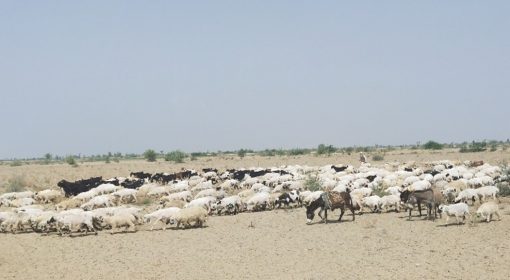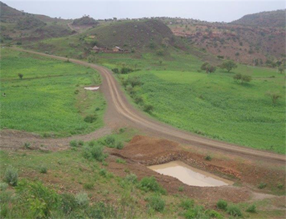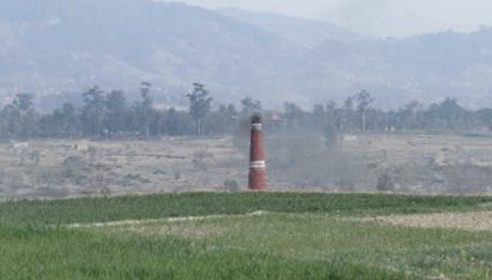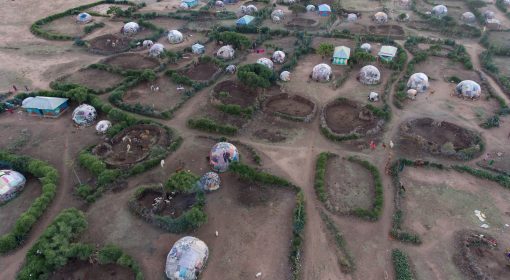By Long Hoang
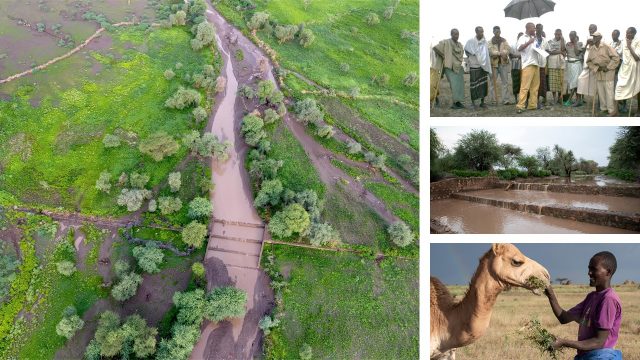
Dry valleys in the Ethiopian lowlands represent a hot spot for development especially regarding land and water management. These areas face multiple challenges caused by erosion, rangeland degradation, and droughts, requiring timely actions. While the urgency for action is high, local capacities are limited as attention and resources tend to concentrate in more productive systems e.g. the highlands. Together with the Ministry of Agriculture, local communities and development partners, the GIZ – German development agency is implementing a programmatic initiative for sustainable dry valleys management – the so called Dry Valley Rehabilitation and Productive Use DVRPU.
The DVRPU – Dry Valley Rehabilitation and Productive Use is a systemic approach to induce and promote effective and sustainable rehabilitation and productive use of degraded land in dry valleys of the Ethiopian lowlands. The main rationales driving the DVRPU approach is that a combination of technical, infrastructure intervention with an array of stakeholder engagement, participatory planning and building commitment help the drylands to halt and reverse losses of the landscape stabilizing vegetation, soil erosion and land degradation. Concrete measures entailed under the DVRPU include:
- Community engagement, participatory appraisal and planning to build common understanding of the baseline situation and potential for intervention – with a special focus on sites and sizes of intervention measures.
- Implementing of physical measures and biological measures. Central in the physical measures is the water spreading weirs, complemented by dry-stone measures. Biological measures include planning bushes and grasses in strategic locations to stabilize the landcover, improving water infiltration, and reducing erosion.
- Follow-up measures for further development and maintenance of the implemented measures, for example promoting flood-based farming systems benefiting from the water spreading weirs, value chain development for agriculture sector, documentation, building up knowledge bases and institutionalizing these into research and education institutions.
Further details on the DVRPU approach is available here.
A recent learning event organized by MetaMeta, GIZ and partners addresses the importance of research, training and education capacities to boost DVRPU application and upscaling. Educational institutionalization of the DVRPU approach into activities of universities and TVETs is a highly promising lead for dry valley management. This process benefits the lowlands in several important ways:
- Build the currently poor resource pool, especially human capitals, for implementing DVRPU.
- Mainstreaming dry valley management and restoration into professional expertise and day-to-day operation of practitioners as well as into the policy and management domains.
- Establish and strengthen the meaningful participation and contribution of universities and TVETs into the upscaling process of DVRPU and dry valley management in general.
Experts, educational professionals, NGOs and governmental representatives participating in the learning event envision a comprehensive process for the institutionalization:
- In the short run, focus on funding short courses on DVRPU at universities and TVETs. Design compact on-job trainings for land and water professionals including extension agents, technical advisors and local staffs from the ministries.
- Address the capacity gaps at universities and TVETs towards fully functional knowledge and education institutions catering DVRPU and related topics to students and professionals. In this regard, attention should be paid to: staff turnover and dedicated staff to specific topics; curriculum development with stronger links to practices and market demand; research on DVRPU approaches. All in all, the addressed gaps directly support the overarching objective to practically implement and adapt already field-tested DVRPU elements.
- Curriculum development requires special attention, and will play a pivotal role in transferring, and upscaling DVRPU activities.
- Institutional improvements at universities and TVETs, particularly building a network of organizations for exchanges, mentorships and coordinated research and education initiatives are recommended to build a knowledge and education community around DVRPU.
The universities and TVETs shall play a central role in linking research and education to on-going dry valley management practices, through strong financial resources from the government and from the market-driven training and education activities themselves. Such a positioning and working modality will strengthen added values for knowledge institutions, as well as benefiting the overall objective of sustainable dry valley management based on the DVRPU and related approaches.
